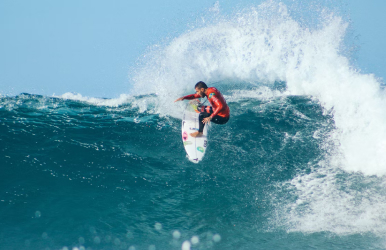5 Secrets on How to Travel Light – Travel Hacks
BY Abdul Aziz May 17, 2021
Aside from the hassle of flying, jet lags, and carrying luggage around the airport and to your accommodation is a challenge– add up the worries about how you can look fashionable. When we say travel light, it does not mean you have to sacrifice your style and comfort during your trip. However, we want to encourage you to rethink and organize your luggage for traveling light. It is not impossible to travel light and maintain the fashion or style along with the essentials you want during your travel. Packing is an all-time complicated issue. But now it is becoming much more simple and easy to organize your necessary items. Whether you are looking for ways to travel with a hand-carry bag, or you simply want to cut down your budget trip, then check out these five secrets on how to travel light. 5 Secrets Tips On How to Travel Light – Travel Hacks: If you do not have the knowledge of how to pack. You have to focus on ultra-light travel trailers to travel Light. But if you have the knowledge of tricks and tips for luggage packaging, all your hard work becomes short and simple. Here are the five tips for traveling light. Secret 1: Use Smaller Luggage or a Suitcase Traveling light starts with the luggage you will bring. If you use a bigger suitcase, you have more space to fill, but there will not be enough space for unnecessary things if you choose smaller luggage. Consider lightweight suitcases for your travels. Manufacturers claim that luggage under 10 pounds is lightweight, while those around 7 pounds are claimed to be ultralight. If you choose a smaller suitcase, ensure that it has enough compartments and pockets that will help you organize your personal things. Ensure the weight of your bag before traveling. You can purchase a travel scale for accuracy. Do not rely on the weighing scale at the airport. It will be too late if you have packed too much. Secret 2: Stick to the Packing List One of the common mistakes why travelers pack too much– especially those who are first-timers, is because they did not use a packing list. A packing list will help you pack only the necessary things for the travel. Try packing all the things you like without the guide of the packing list. When you are done, get the list and take out those unnecessary ones that are not on the list. You realized you still have a lot of space, right? That’s why only take those you need for the trip. Do not bring too many clothes that you won’t wear. Not sure which are items are essential? Check some packing lists on the web. You might find a packing list that suits your travel destination! Secret 3: Pack Lightweight Clothes Remind yourself that you are not only packing clothes for your travel. You also have to pack some toiletries, electronics, and shoes. Thus, you need to pack lightweight clothes. Choose to pack clothes that are made from lighter fabrics. Wool or heavyweight fleece jackets are bulky and heavy. Although these garments can keep you warm, some fabrics are lightweight but can still offer warmth. When it comes to shoes, bring a comfortable pair, flexible in style and not bulky, you can also pack one pair of shoe inserts if needed. But do not bring more than two pairs of shoes, be realistic enough. Bring another pair if you have a special occasion to attend during your travel. If you have a formal event to attend during your travel, bring one classy yet flexible outfit. Flexible outfits are those you can still wear for another evening but pair with a different outfit. Do not bring a bulky dress or full suit and jacket outfit. It will take up a lot of space in your luggage. Although we mentioned toiletries, you can pack none, depending on your accommodation. If you booked a hotel, it is expected that they will offer free toiletries. However, if you book at Airbnb or other rental places, ask the host first whether they have toiletries available. If not, bring the lightest options. Secret 4: Wear the Largest Wearable Item If you plan to bring large items like shoes, hoodies, or sweatpants– wear them. Exercise clothes have become fashionable recently, and if you are going on a long-haul journey, it is best to wear these large yet comfortable items. Most large items are shoes. Minimize packing more than two pairs of shoes on any trip. Women can go with comfortable sneakers, which are comfortable to walk around, and heels or sandals for formal wears. The same with men, it is best to pack sneakers and loafers only. Secret 5: Do Not Pack a Week’s Worth. Laundry Clothes You might be traveling for a business trip, or you want to spend more than a week at your travel destination, but even so, it is not reasonable to pack more than a week’s worth. If you will, you would pay a hefty amount for additional baggage. Here are a few things to remember when packing clothes: Use a dryer sheet to keep your clothes fresh in the luggage. Pack only outfits that you can mix and match. Limit yourself to two pairs of pants and shoes. Pack clothes that will go well in multiple outfits. Pack travel-sized laundry detergents to use when doing laundry at your travel destination. Speaking of doing laundry at your travel destination, you can do it in three methods– use laundry detergent from The Laundress or somewhere similar and hand wash your laundry in your bathroom sink, make use of the hotel laundry service, or go to the nearest laundry shop. If you do not have the time to hand wash your laundry or the budget to acquire the hotel laundry service, heading out to the laundry shop is the best option. Laundry services in laundromats are affordable. You can leave your dirty laundry and go back for it after your tour. It is best to search for a reliable laundry service and dry cleaning expert around the neighborhood of your travel destination, rather than plan it on the spot. You do not want to ruin your favorite clothes during travel, right? Wrapping It Up: If you are on business, it is expected that you will bring electronics with you. Ensure that you don’t forget its chargers. You can securely place them in the small compartments of the luggage. Traveling light is easy if you follow these secret tips. You may have limited the things to bring, but you haven’t compromised the fun and fashion you need on your trip. How you are going to pack your clothes, do not forget to share your funny packing experiences with us. Read Also: The Best Tips To Travel Around The World How To Prepare Yourself For The Perfect Vacation: Top 7 Tips Top 5 Ways To Spend Your Time During A Long Flight By A Wanderlust At Heart











